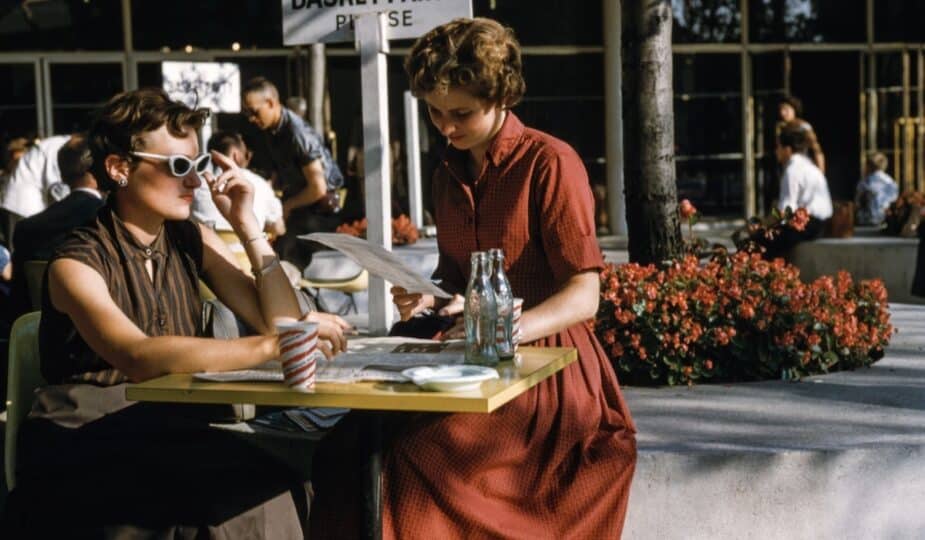By Pauline Weston Thomas For Fashion-Era. com
Pressing Clothes for Packing
Packing goods well is very important. When the buyer opens an item they do not expect to get a garment so creased that they are instantly disappointed. However there will be some wrinkles, especially along the fold lines, for after all it is a vintage item and creasing is time dependant.
An item that has been packed up for 3 days in transit in the post will likely take as long for any creases to drop out. Do give the garment a chance to drop out as most creases are time dependent damage due to the cross-links bending within fibers and forming new positions.
If there is still a lot of creasing place the item in a steamy shower or bathroom or use a steamer or kettle minus the lid in the same room. The fiber cross-links are weakened by the steam and reform in new positions, hopefully, their original flat position. I'll assume your item is clean and in good condition before you even think about packing it.
Cleaning was discussed on the page how to wash vintage cloth, but one thing that won't hurt it would be to check it for dust, fluff, and lint bits, especially if you have cleaned it, but left it hanging for a while.
With wool or velvet garments in particular you can gently and lightly vacuum the item with the special upholstery brush provided with your cleaner. You can also cover the nozzle end with some pantyhose leg and use that if you have no special attachments.
Finally, either use a special lint remover or wrap scotch or sellotape around your hand generously and carefully run the tape down the garment to drag off stubborn fluff. If you use the hand method be generous with the tape and throw away and renew it to get efficiency and a clean lint free surface. Do not make the mistake of ironing any item just before packing.
Press the item the night before or about 8 hours before packing it. The chances are if you press just before packing you will add an element of moisture when you do the pressing, particularly to thicker fabrics that wick moisture.
This moisture combined with residual warmth in the garment will actually cause some wrinkles, if you immediately fold the item up into a small space.
At that point, the creases become heat set as the cross-links in the fibers bend and reform into new, but now crooked positions. Leave the item to air thoroughly from all angles by hanging it up from a door frame with air surrounding it.
Special Treatment for Pressing Velvets Before Shipping
Velvet likes a steamy atmosphere best of all and should never be pressed unless you have a purpose designed velvet needle board or a piece of plush velvet kept solely for the purpose of pressing other velvets. A needle board prevents the pile of velvet or velveteen from being crushed.
They can be bought from good haberdashers and usually cost at least £25. I've always preferred those on a soft back that can also be rolled up and used in awkward parts of the garment.
The cheaper alternative is to keep a piece of velvet fabric, place it on your ironing board and press the garment pile into the velvet so that the two layers press pile into pile.
A jacket will be much harder to press this way than a dress with a loose lining. If in doubt, take the garment to be professionally steamed at a cleaners or first try hanging it in a steamy shower room. If you make a mess of pressing velvet and flatten the pile you have usually caused shine and pile damage that is permanent.
Under rather than over press velvet and try also the freely steaming kettle minus lid method. Devoré velvet or burnout style used to be called broderie chimique andis best pressed with the pile sinking into that special pressing velvet cloth described above. Needle boards can damage the sheer elements of devoré fabric and snag and create pin holes.
Always try out pressing techniques on inexpensive items that you have no love for. Velvet boards can be obtained at internet haberdashery supplies stores. Note - sometimes this is also called voided velvet.
Tyvek Envelopes and Boxes for Shipping
Many sellers ship goods in waterproof Tyvek envelopes and place these in a box. This is important because if the box gets wet ink can run on a box and damage goods if they are loose inside.
For the same reason any handmade labels should also be placed in a sealed plastic bag or suitable envelope and kept separate from the garment. All sorts of boxes can be used, but you can use special postal boxes, special garment boxes, hatboxes and lower down the market even unused pizza boxes.
The main difference in boxes will be more important if the item is to be stored long term in a box or is just being used to transport the item to its destination. The more professional and upmarket you see your service the more attention you should pay to the packaging.
Designer evening gowns from earlier eras may have an original box which may be 4ft or so in length. Otherwise obtain boxes called archival storage boxes from a supplier such as The Container Store who produce a variety of boxes up to 40 inches long and also sell acid-free tissue paper.
You might also investigate Heritagegown.com who provide a service suitable for bridal gown preservation and also sell buffered and unbuffered tissue paper. The price of specialist boxes might seem to eat into your profit, but anyone who has spent thousands of pounds or dollars expects at the very least the original designer label box or a brand new box.
If you feel a couple of pounds or dollars on a gorgeous piece of ribbon and perhaps an artificial flower will add to the flourish and style of your wrapped up vintage item go ahead and do that.
It's a good idea to ask the buyer if they are willing to pay more for deluxe packaging, and if they are what you must offer them is a deluxe packaging service. That means new quality acid free tissue paper worked in every fold as you fold the garment, a ribbon, a tyvek envelope, bubble wrap or shredded paper or polystyrene bits to fill in air gaps and stop the item floating about, then a quality box.
Corrugated shipping boxes may suit the garment price range you work in better than archival boxes as long as they are for transporting the item rather than storing it. An item that is fairly snug in the final box won't flop about and over crease.
If you do your best to pack items well, they will arrive in reasonable condition and buyers will be pleased and spread good words about you. The main thing here is that you think about packing it and do your best to make the package do a good job.
A browse at the Heritage Gown Site will give you information and ideas about storage and preserving your precious items long term to a museum standard. Other suppliers do of course exist, but this will get you started. It really would be impossible for any garment to arrive totally crease free unless it were door to door courier delivered on a hanger in a garment bag.
Sometimes telling the buyer that creases will happen during transit will reassure them. Using a flyer with some hints and tips on caring for the item when it's unwrapped will be sufficient to set their mind at rest.
The unexpected will floor them so make an effort to restore their confidence before they make that unnecessary phone call which wastes their time and yours. The last thing you want is for a buyer to have a sense of disappointment when they open up the box.
Try to think of the last time you had a tooth extraction or head injury. You felt reassured didn't you that you were given a detailed leaflet with symptoms to look out for and what might happen and how to deal with it, but also what was normal to expect.
Public Relations Sales Information/Personal Touches with the Shipped Item.

Consider adding little touches like a "thank you for buying vintage from me" card, but just make sure it isn't going to damage that precious item by bleeding if it gets wet.
Or you could add a leaflet about the costume history of the era they have chosen their item from, or even a list of websites or booklist to help them research the period or the designer or brand.
Try imagining making the recipient feel as if they received a wonderful much wanted gift from you, rather than a purchase. Make them want to contact you for repeat business or to thank you.
This gives you a personal bonus and a little fillip of a job well done.

